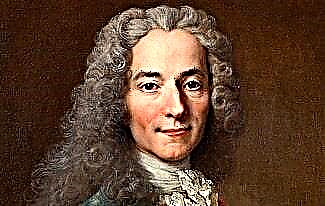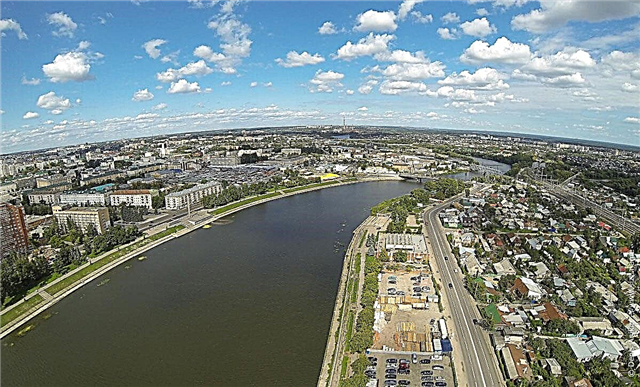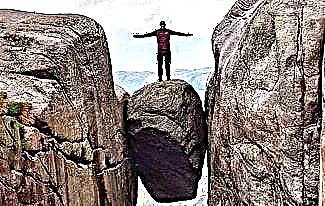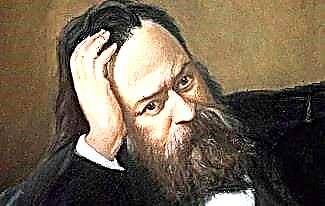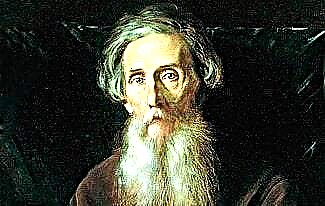Prague is a city in which tourists' legs constantly hurt, because there is a lot of interesting things here. Numerous unique attractions and simply beautiful places reflect the long history of the city. One of the most iconic places is Prague Castle - an old fortress and the most important monument of the history of Prague.
History of Prague Castle
This is a huge complex of palace, administrative, military and church buildings, combining the styles of different eras. The main monument of more than a thousand years of development of the Czech people is located on 45 hectares of territory.
Its origin took place in the 9th century simultaneously with the formation of the Czech Republic, at the initiative of the Přemyslids. The original palace was made of wood, and the Church of the Virgin Mary was the first stone building in the entire complex. Since 973, Prague Castle has been not only the permanent residence of the prince, but also the abode of the bishop.
At the beginning of the 12th century, the rebuilding of the settlement began, initiated by Sobeslav 1. A stone palace and fortifications with towers were erected, the most famous of which is the Black Tower.
In the 14th century, Charles 4 persuaded the Pope to raise the bishopric to an archbishopric, and therefore the construction of St. Vitus Cathedral began. The emperor also strengthened the walls and rebuilt the palace. In the following years, the imprint of the reign of Ferdinand 1, Rudolf 2, Maria Theresa appeared on the architecture.

The year 1918 was marked by the fact that the President of Czechoslovakia first began to sit in the Castle, the building remains the main residence of the ruler to this day. In 1928, the first lamps were installed to illuminate the landmark, and since 1990, Prague Castle has been "glowing" every day from dusk to midnight. There are many museums and exhibitions in the Grad showcasing the rich history of the Czech people.
What to see?
Prague Castle is visited annually by millions of tourists who come to see the main historical sights:
- Gothic St. Vitus Cathedral with the tomb of kings in the very inner courtyard.

- Baroque royal palacelocated in the second courtyard.

- Romanesque Saint George Basilica (St. Jiri) with the towers of Adam and Eve in Georgplatz.
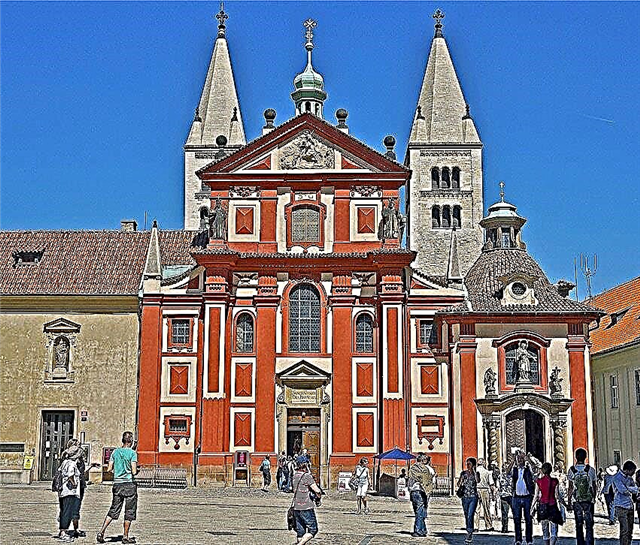

- Gothic hall of Vladislav in the inner courtyard itself.

- Chapel of the Holy Cross in the Moroccan style, which once housed the cathedral's treasury, is in the second courtyard.

- Baroque gallery the castle with works by Rubens, Titian and other masters is located in the second courtyard.
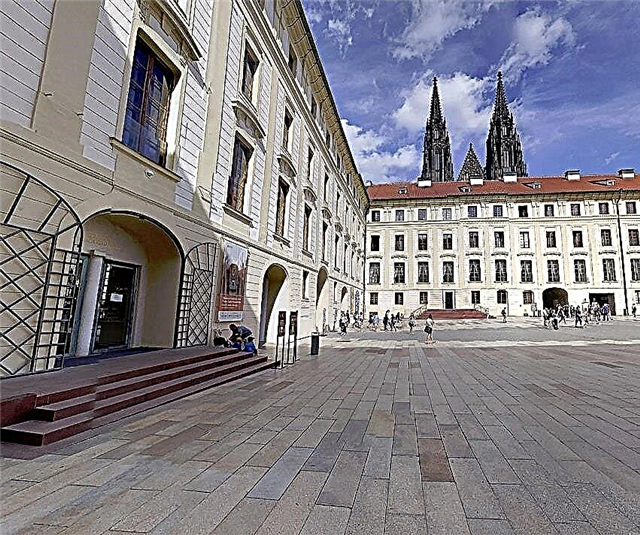

- Obelisk, erected in memory of the victims of the First World War, is located in the first courtyard near St. Vitus Cathedral.
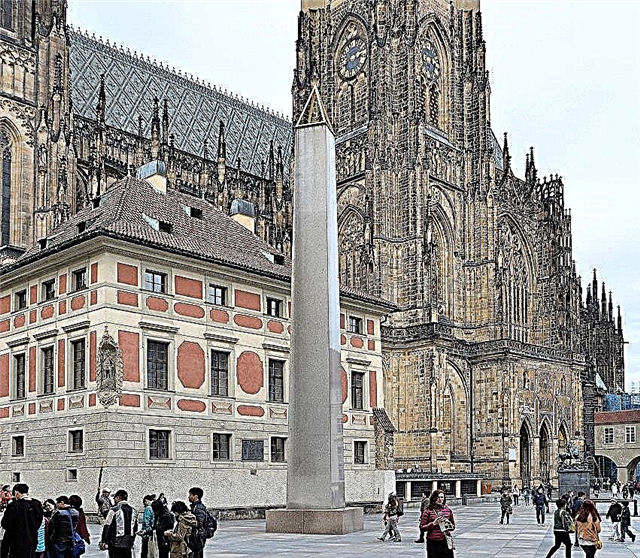
- Fortification on the northern edge of the castle with the Renaissance Mihulka powder tower and the Gothic Daliborka tower.

- Golden lanes with Gothic and Renaissance houses, surrounded by the aforementioned two towers, where in 1917 Franz Kafka lived temporarily in house no. 22.
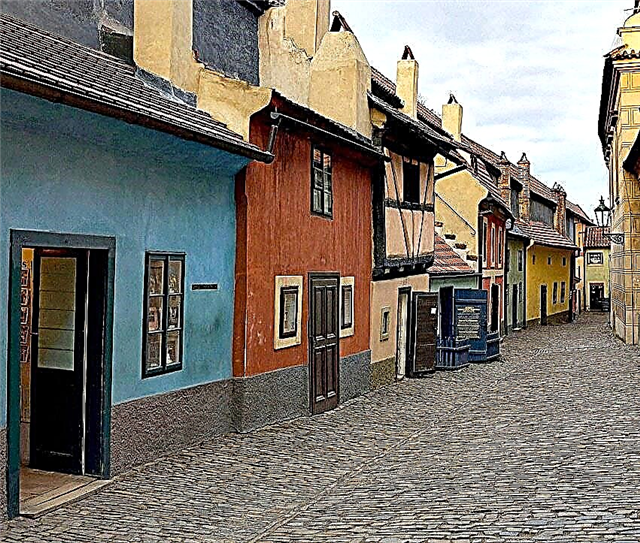
- Matthias Gate, built in 1614.
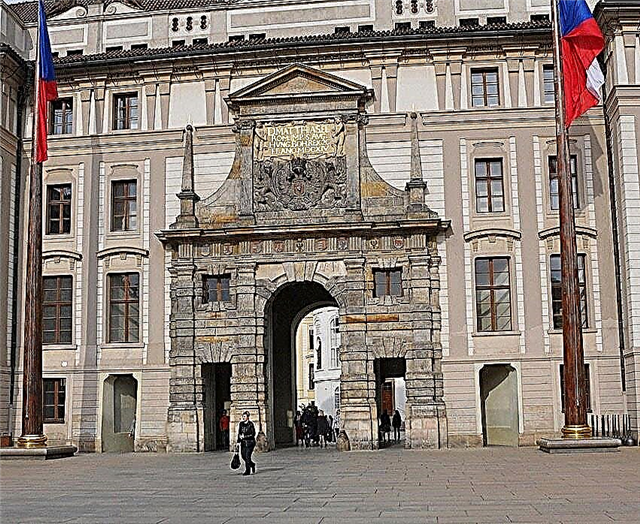
- Sternberg Palace with exhibits from the National Gallery.

- Lobkowicz Palace - a private museum, which contains part of the art collections and treasures of the princely family, is located next to the eastern entrance.
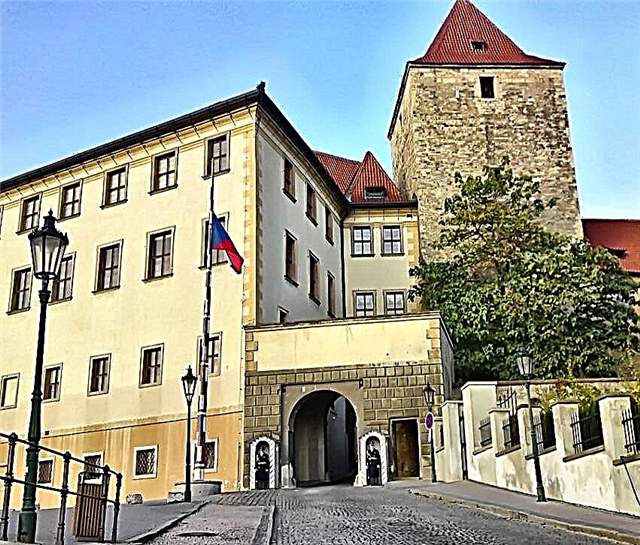
- Archbishop's Palace.

- Rosenberg Palace.
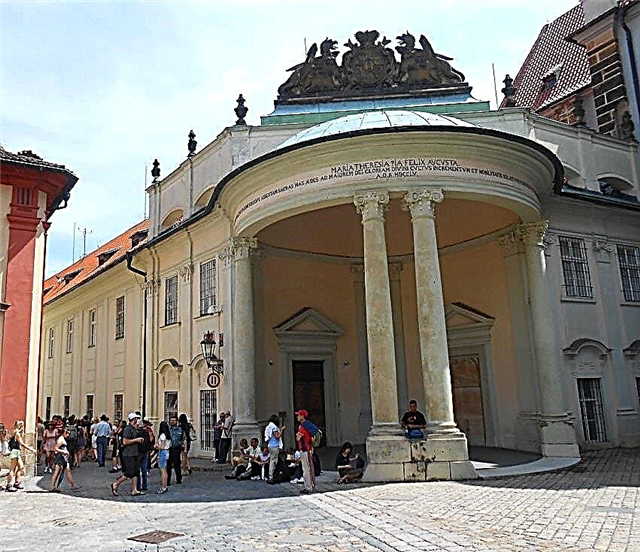
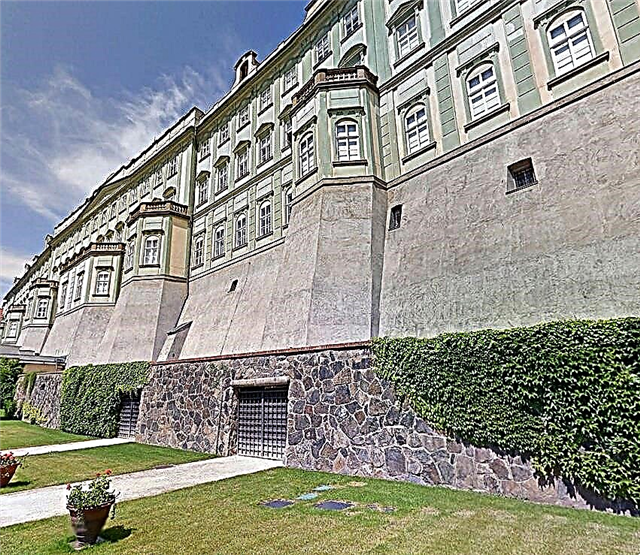
Hradčanskaya square
Spread out at the main gate of the sight, the square unites architectural monuments and traditions of the people. The territory in our time continues to be guarded by the presidential guard, consisting of 600 people. The Changing of the Guard ceremony is the main pride of the Castle. It starts at 12:00 every day and lasts an hour. The changing of the guard is accompanied by the orchestra.

Prague Castle Gardens
Starting from the 16th century, the complex ceased to fulfill its actual purpose, that is, to be a fortified castle. Many defensive walls were demolished and ditches filled up. There are six gardens in the immediate vicinity of Prague Castle on its northern and southern sides. They form a bright green ring around the castle.
- Royal gardenlocated to the north of the castle, with an area of 3.6 hectares, is the largest among them. It was built in 1534 in the Renaissance style on the initiative of Ferdinand I. The grounds include attractions such as Queen Anne's Pleasure Palace, a greenhouse and a singing fountain.
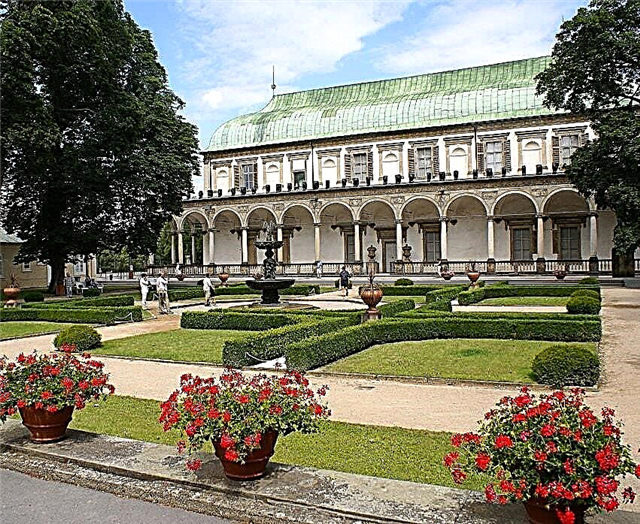
- Garden of Eden landscaped first. It was built in the 16th century and designed by the Archduke of Austria, Ferdinand II and Emperor Rudolf II. Thousands of tons of fertile soil were brought in for him. It is separated from the castle by a high wall.
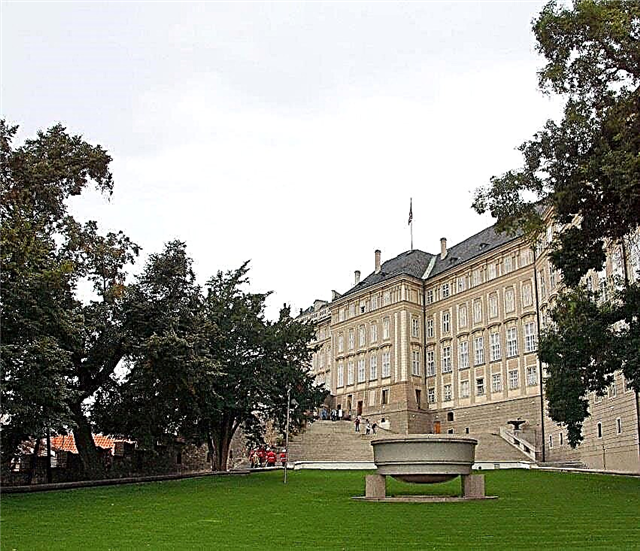
- Garden on the Ramparts is located on an area of about 1.4 hectares between the Garden of Eden in the west and the Black Tower in the east. The first written evidence existed in 1550 after it was built by order of the Austrian Archduke Ferdinand II. It is designed in a strict aristocratic style, like a typical English park.

- Gartigov garden It was designed in 1670 and was included in the list of Prague Castle gardens only in the 20th century. It consists of two small terraces with the Music Pavilion in the middle.

- Deer moat - a natural gorge with a total area of 8 hectares. It was originally used for defensive purposes under Rudolf II. Medicinal plants were grown here and deer were hunted.
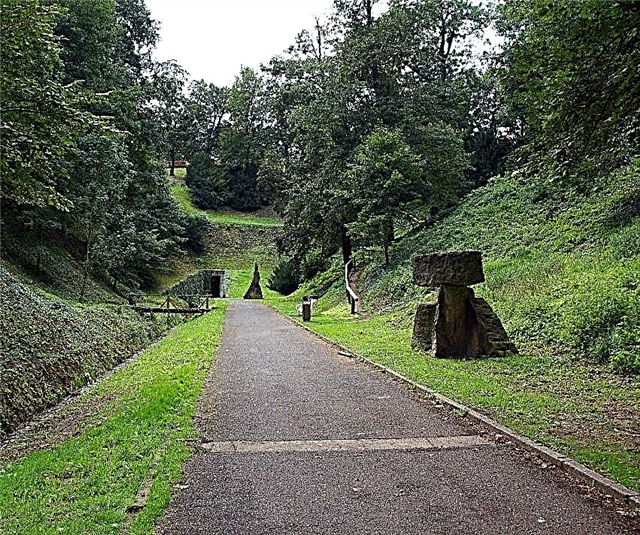
- Bastion Garden is located in the 4th courtyard of the castle and occupies about 80 percent of its area. Apple and pear trees, spruces, pines and other trees grow here.
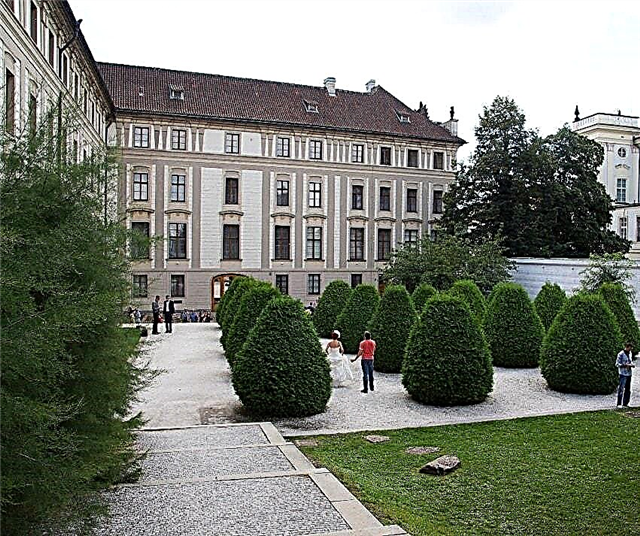
Art Gallery
It was opened in 1965 and is located in the New Royal Palace. The gallery owes its appearance to Emperor Rudolph II, who gravitated towards collecting works of art. He hired professional traders to find new masterpieces of painting.
Observation deck
The second tallest observation deck in the city is located in Prague Castle, namely on the southern tower of St. Vitus Cathedral. Its height is 96 meters: you have to climb 96 steps on the way to the top. Old and New Prague will appear before your eyes, you will easily consider the outstanding places of the capital of the Czech Republic and take a memorable photo.
How to get there, opening hours, prices
Prague Castle is located on the left side of the Vlatva River, on a rocky bank in Gladčany, an ancient district of the city. The favorable location of the fortress made it possible in the old days to build an impressive defense of Prague.
How to get to the attraction: Take the city metro and get off at the Malostranska station and walk about 400 meters to the fortress. Another way: take the tram to the Prazsky hrad stop and go down to the Grad, overcoming 300 meters.
Accurate address: Pražský hrad, 119 08 Praha 1, Czech Republic.
Opening hours of the complex: from 6:00 to 22:00. The exhibition halls, historic buildings and gardens located on the territory of Prague Castle have their own opening hours, which may vary depending on the season.
We recommend seeing the Genoese fortress.
Purchase tickets the excursion is possible at two points: the ticket office and the information center. They have their own categories: small and large circle, third circle, guided tour with an audio guide. They indicate a list of attractions that you can visit. All tickets can be paid both in cash and by credit card.
Ticket prices for adults for a large circle - 350 kroons, for children - 175 kroons, for a small one - 250 and 125 kroons, respectively. The entrance fee to the Art Gallery is 100 CZK (50 for children), and the entrance to the Treasury is 300 (150 for children).

























